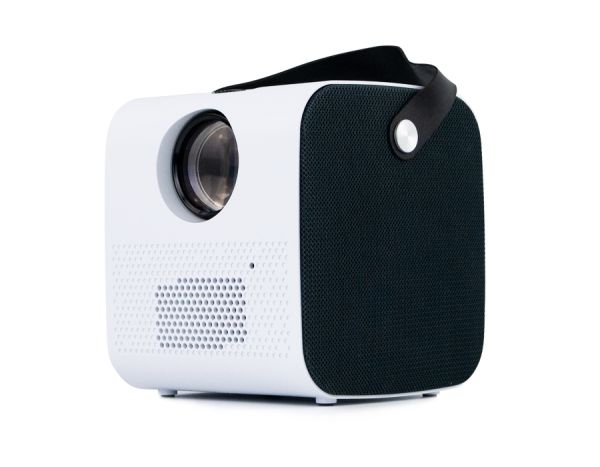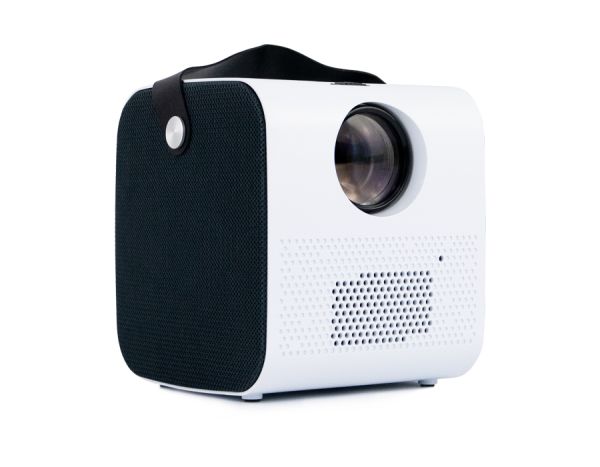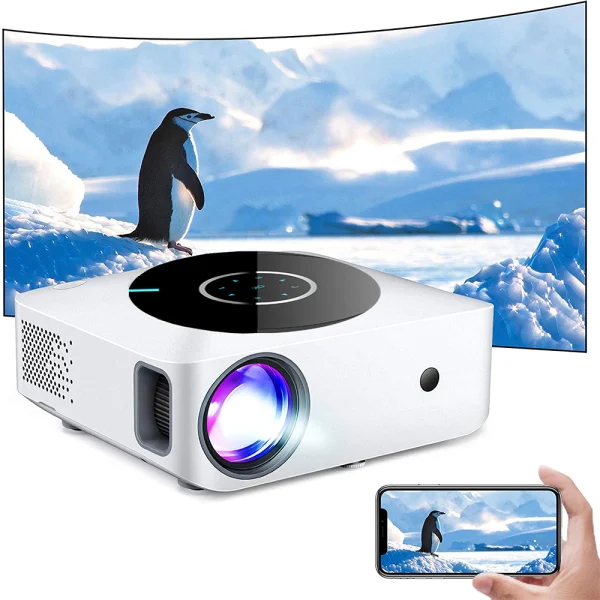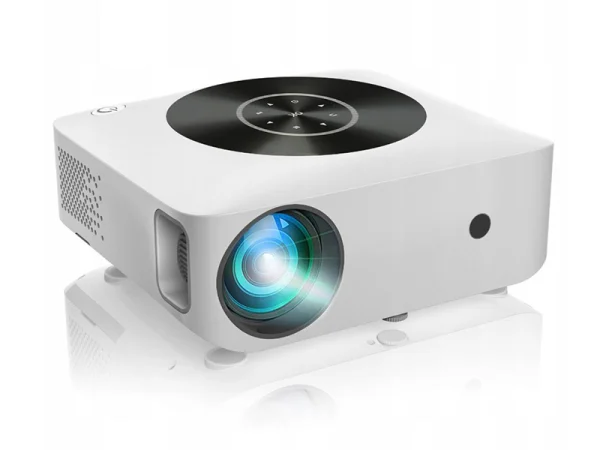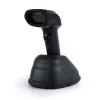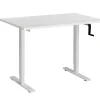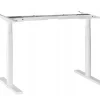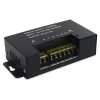- Home
- Projectors
Projectors
Projectors are used to display images on any surface. They are ideal for use both in the office during various presentations and in the comfort of your home for watching movies and photos with friends. The high-quality optical system offers a good quality image.
The projectors are made of high-quality materials and have a solid construction. They feature modern and attractive design, making them fit into any interior and adding aesthetics. They allow for comfortable operation in almost any lighting conditions. Some models are equipped with useful applications that enhance comfort and facilitate device operation.
=LONG= Projector - an indispensable device for work and relaxation!
Multimedia projector is a device used to display images or videos on any surface, such as a wall, canvas, or special screen. Projectors are used in many fields, including education, business, cinemas, or in the comfort of home. They can be used for multimedia presentations, movie projections, displaying photos or music videos, and even for playing video games.
Structure of a multimedia projector
The basic element of a projector is the lens, which focuses the light produced by the device. The next element is the lamp responsible for emitting light. In turn, the optical corrector focuses and transforms the light into an image. The matrix-containing unit is responsible for converting light into video. All these elements are connected to a processor that controls all projector functions.
What parameters should you pay attention to when choosing a projector?
When looking for a projector, you will encounter a wide range of equipment characterized by various parameters. It is worth knowing which ones to pay special attention to.
Resolution
To enjoy a clear and smooth image, you should pay attention to the resolution above all. The rule is that the higher the resolution, the better the quality of the displayed image. The best quality is provided by HD or Full HD resolution. A full HD projector will be perfect for displaying and watching movies. On the other hand, equipment with a resolution lower than HD will work successfully in office conditions for displaying presentations. As you can see, everything depends on the user's preferences and the intended use of the device.Brightness
Equally important as resolution is the brightness of the lamp. It is responsible for a clear image regardless of the lighting conditions in the room. The higher the brightness of the lamp, the clearer the image displayed in poorly lit rooms. However, if the projector is mainly used for watching movies in dark rooms or in the evening-night time, it is worth considering a slightly lower brightness of the lamp to ensure pleasant visual experiences. The brightness of the lamp is expressed in lumens or ANSI lumens. Lumen is a unit related to the measurement of the light output of a device and gives the user an idea of how much light its source can emit. In simpler terms, a lumen is a measurement of all the light emitted by the projector. Lumen (marked with the symbol "lm") quantitatively specifies the total amount of light that can be seen as emanating from a specific light source (in this case, the projector). On the other hand, ANSI lumen is the result of several variables, such as contrast and brightness, measuring white fields in 9 places on the screen and averaging those measurements, which are then multiplied by the total screen area. The resulting ANSI lumen measurement is much more accurate than a regular lumen. Therefore, this parameter is taken into account by buyers who choose new projectors.Contrast
The parameter of contrast is responsible for the colors of the displayed image. The higher the contrast, the more vibrant and pleasant the colors. Contrast is particularly important when watching movies because it significantly affects the perception of the image.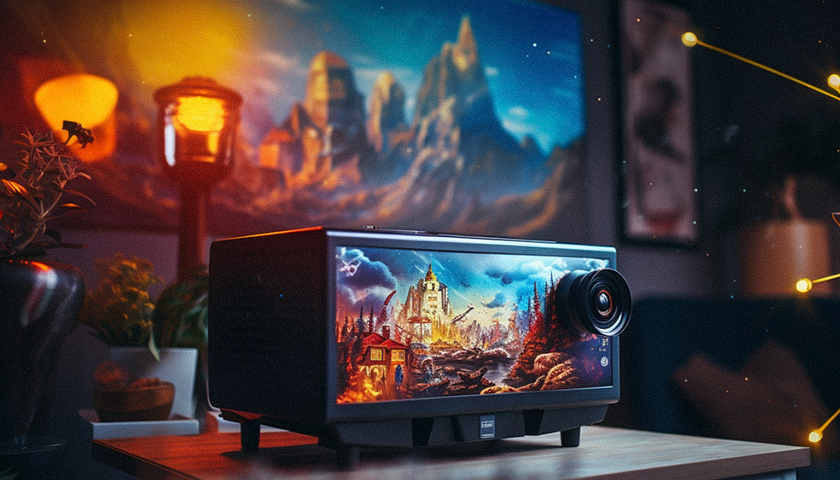
Types of multimedia projectors
Multimedia projectors differ not only in technical parameters such as brightness, resolution, contrast, or optical zoom but also in size and shape. Considering these characteristics, projectors can be divided into:
- Wired - they are connected to a computer or other image source via a cable, allowing for the display of presentations, movies, photos, and other content on large screens or walls. These projectors are often used in conference rooms, lecture halls, cinemas, theaters, and events such as concerts and fashion shows.
- Wireless - also called network projectors or Wi-Fi/Bluetooth projectors, these devices allow for wireless transmission of images and sounds from various signal sources, such as smartphones, tablets, computers, and other devices with Wi-Fi or Bluetooth support. This allows users to transfer content directly from mobile devices or computers without the need for cables.
- Stationary - these are the most popular devices, characterized by a rectangular shape. They are most commonly used in offices or schools for displaying presentations and in the comfort of home for watching movies. They are designed to be placed in a convenient location.
- Portable - characterized by compact, small size. They are much smaller than stationary projectors, which makes them easier to carry. They mostly have an oval shape or a long cube. They have a large battery, which usually allows for 3-4 hours of wireless operation. The compact size and the ability to operate wirelessly make these devices perfect for travel and outdoor screenings.
What can you connect to a projector?
Projectors have a variety of different connectors, providing a wide range of connectivity options for various devices. Many projectors have AV, VGA, and HDMI connectors, allowing for connection to a monitor, game console, or TV decoder. Equipment for display often offers USB ports as standard, allowing it to work with any data carrier, such as a USB flash drive or external hard drive. Additionally, you can connect a wireless mouse or keyboard receiver to the USB port for easier projector operation. Some projectors have an LAN port, allowing connection to the internet, and a 3.5 mm audio output for connecting headphones or speakers.
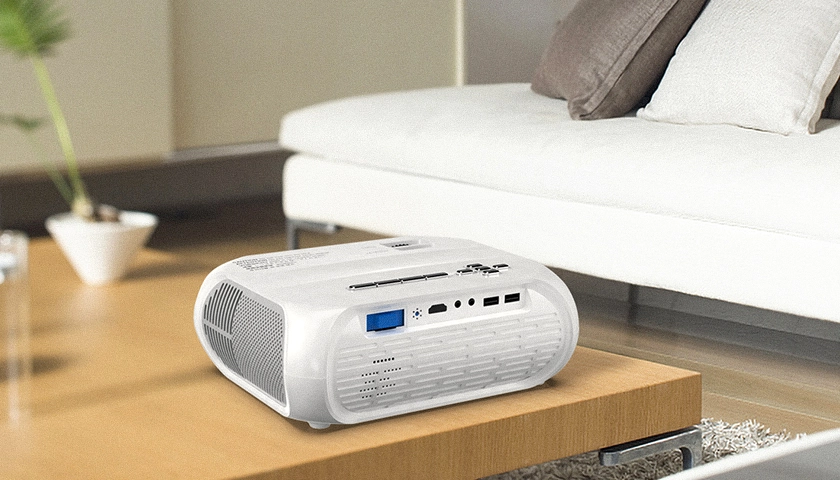
Clear Filters
Clear Filters
Brightness: 1700 ANSI Lumens
Resolution: Basic - 1280x720 (HD), Maximum - 1920x1080 (Full HD)
Power Supply: AC 110-240V, 50/60Hz
Available Ports: 1x 3,5 mm Audio, 1x USB, 1x HDMI, 1x AV
Brightness: 2300 ANSI lumens
Resolution: 1920 x 1080 px (Full HD)
Operating system: Android 9.0
Wireless modules: WiFi, Bluetooth
Available connectors: 1x USB, 1x AV, 2x HDMI, 1x 3,5 mm Audio, 1x microSD card reader
Projectors are used to display images on any surface. They are ideal for use both in the office during various presentations and in the comfort of your home for watching movies and photos with friends. The high-quality optical system offers a good quality image.
The projectors are made of high-quality materials and have a solid construction. They feature modern and attractive design, making them fit into any interior and adding aesthetics. They allow for comfortable operation in almost any lighting conditions. Some models are equipped with useful applications that enhance comfort and facilitate device operation.
=LONG= Projector - an indispensable device for work and relaxation!
Multimedia projector is a device used to display images or videos on any surface, such as a wall, canvas, or special screen. Projectors are used in many fields, including education, business, cinemas, or in the comfort of home. They can be used for multimedia presentations, movie projections, displaying photos or music videos, and even for playing video games.
Structure of a multimedia projector
The basic element of a projector is the lens, which focuses the light produced by the device. The next element is the lamp responsible for emitting light. In turn, the optical corrector focuses and transforms the light into an image. The matrix-containing unit is responsible for converting light into video. All these elements are connected to a processor that controls all projector functions.
What parameters should you pay attention to when choosing a projector?
When looking for a projector, you will encounter a wide range of equipment characterized by various parameters. It is worth knowing which ones to pay special attention to.
Resolution
To enjoy a clear and smooth image, you should pay attention to the resolution above all. The rule is that the higher the resolution, the better the quality of the displayed image. The best quality is provided by HD or Full HD resolution. A full HD projector will be perfect for displaying and watching movies. On the other hand, equipment with a resolution lower than HD will work successfully in office conditions for displaying presentations. As you can see, everything depends on the user's preferences and the intended use of the device.Brightness
Equally important as resolution is the brightness of the lamp. It is responsible for a clear image regardless of the lighting conditions in the room. The higher the brightness of the lamp, the clearer the image displayed in poorly lit rooms. However, if the projector is mainly used for watching movies in dark rooms or in the evening-night time, it is worth considering a slightly lower brightness of the lamp to ensure pleasant visual experiences. The brightness of the lamp is expressed in lumens or ANSI lumens. Lumen is a unit related to the measurement of the light output of a device and gives the user an idea of how much light its source can emit. In simpler terms, a lumen is a measurement of all the light emitted by the projector. Lumen (marked with the symbol "lm") quantitatively specifies the total amount of light that can be seen as emanating from a specific light source (in this case, the projector). On the other hand, ANSI lumen is the result of several variables, such as contrast and brightness, measuring white fields in 9 places on the screen and averaging those measurements, which are then multiplied by the total screen area. The resulting ANSI lumen measurement is much more accurate than a regular lumen. Therefore, this parameter is taken into account by buyers who choose new projectors.Contrast
The parameter of contrast is responsible for the colors of the displayed image. The higher the contrast, the more vibrant and pleasant the colors. Contrast is particularly important when watching movies because it significantly affects the perception of the image.
Types of multimedia projectors
Multimedia projectors differ not only in technical parameters such as brightness, resolution, contrast, or optical zoom but also in size and shape. Considering these characteristics, projectors can be divided into:
- Wired - they are connected to a computer or other image source via a cable, allowing for the display of presentations, movies, photos, and other content on large screens or walls. These projectors are often used in conference rooms, lecture halls, cinemas, theaters, and events such as concerts and fashion shows.
- Wireless - also called network projectors or Wi-Fi/Bluetooth projectors, these devices allow for wireless transmission of images and sounds from various signal sources, such as smartphones, tablets, computers, and other devices with Wi-Fi or Bluetooth support. This allows users to transfer content directly from mobile devices or computers without the need for cables.
- Stationary - these are the most popular devices, characterized by a rectangular shape. They are most commonly used in offices or schools for displaying presentations and in the comfort of home for watching movies. They are designed to be placed in a convenient location.
- Portable - characterized by compact, small size. They are much smaller than stationary projectors, which makes them easier to carry. They mostly have an oval shape or a long cube. They have a large battery, which usually allows for 3-4 hours of wireless operation. The compact size and the ability to operate wirelessly make these devices perfect for travel and outdoor screenings.
What can you connect to a projector?
Projectors have a variety of different connectors, providing a wide range of connectivity options for various devices. Many projectors have AV, VGA, and HDMI connectors, allowing for connection to a monitor, game console, or TV decoder. Equipment for display often offers USB ports as standard, allowing it to work with any data carrier, such as a USB flash drive or external hard drive. Additionally, you can connect a wireless mouse or keyboard receiver to the USB port for easier projector operation. Some projectors have an LAN port, allowing connection to the internet, and a 3.5 mm audio output for connecting headphones or speakers.

